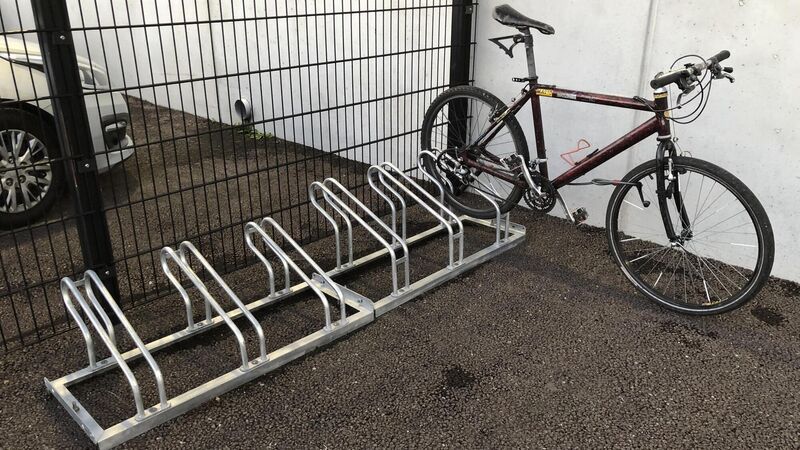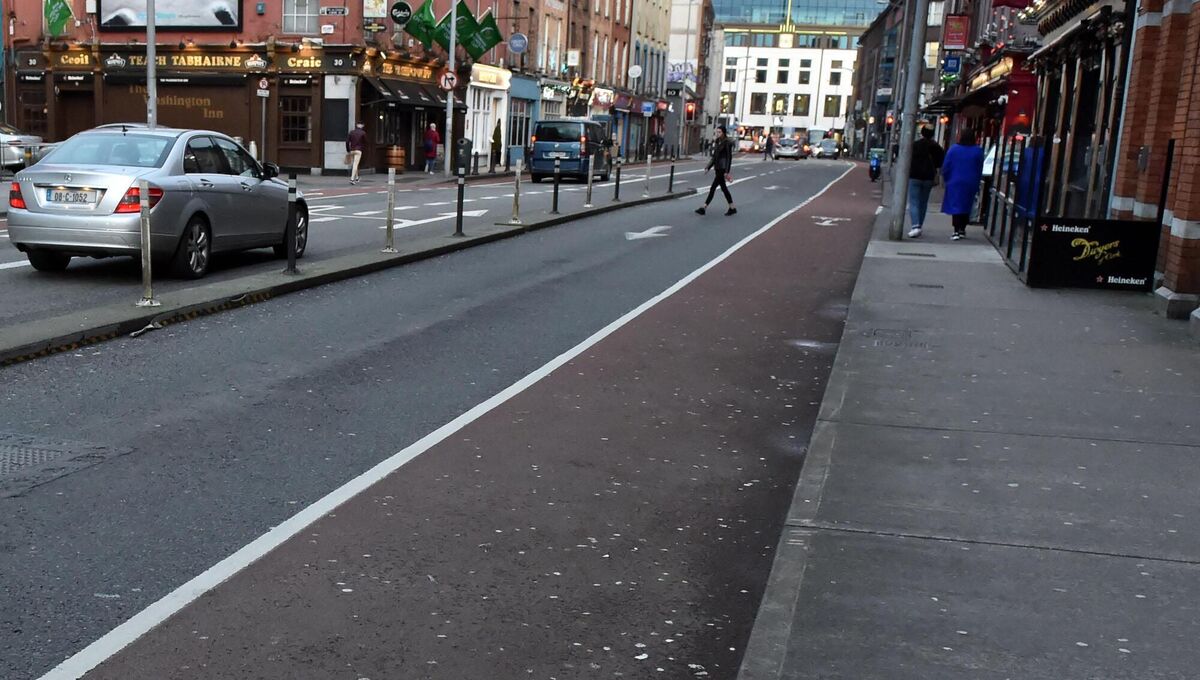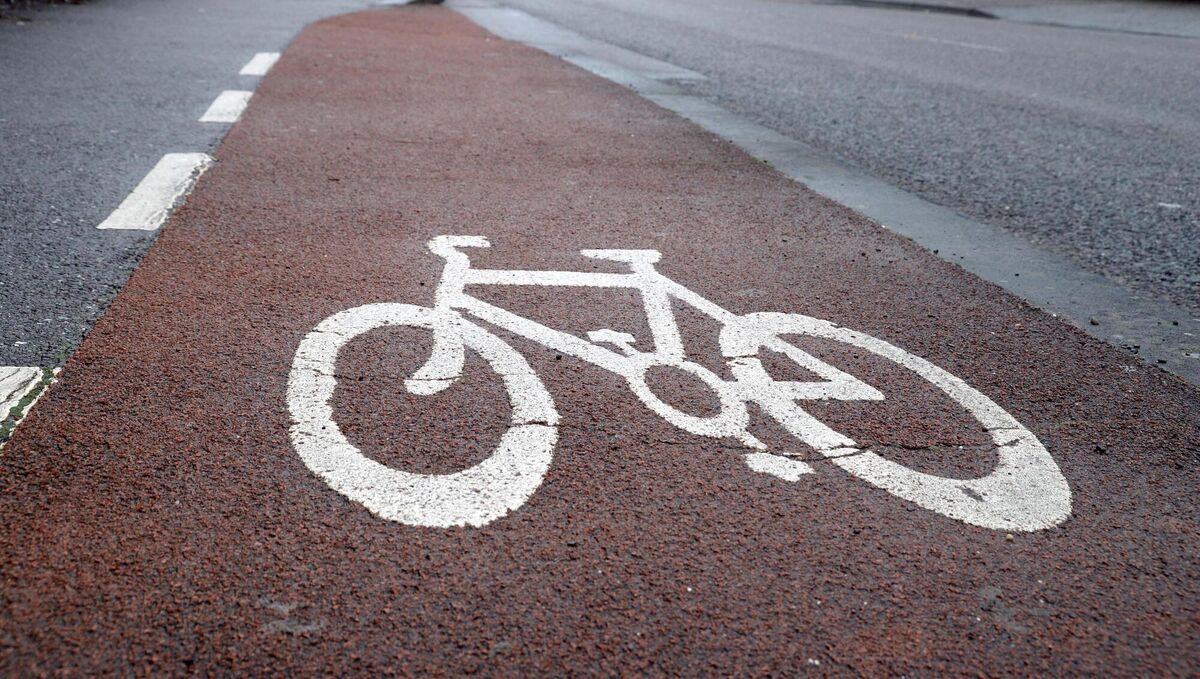Secret Cyclist: Keep asking, keep pestering, and keep reminding venues - we want adequate bike parking

A bicycle wheel rack can be a problem for owners of bikes with quick-release wheels. Picture: Larry Cummins
Bicycle parking must seem like such a small and innocuous detail to most people, especially those who don’t regularly cycle. Just tie your bike on to something, how hard can it be?
If you do cycle, the end of a trip and the hunt for secure bike parking is often the straw that breaks the camel’s back. You’ve battled your way through roads with vehicles of all shapes and sizes hurtling alongside you at 60 km/h, you’ve negotiated the grit, the gravel, the leaves, the illegally parked cars in the cycle lanes, you’ve meandered through the car park avoiding the trolleys and reversing vehicles.
You finally are at the supermarket and now just want to leave your bike somewhere that: (i) is near the front door, (ii) is not in someone else’s way, (iii) is protected from the elements, (iv) has a stand that you can lock your bike onto so it doesn’t get stolen.
Chances are that there is a place at the supermarket that meets all the criteria set up above. Unfortunately for you, it’s the trolley bay. The bike parking, if there is any at all, is likely down the side of the building, beside the emergency exit door where people go to vape. There’s often a wheel rack on the ground that is rusty and dated. You’re not sure if it’s even bolted to the ground. There are six spaces officially — but a few abandoned bikes leave only enough space for one more bike.

Your bike, like most bikes now, has a quick-release wheel system so you have two options. Use your U-lock to tie up the front wheel and risk the rest of the bike being taken, or reverse the bike in and risk your front wheel being taken.
Let this sink in. Most supermarkets in Ireland have better storage facilities for their trolleys than the bicycles of their customers.
In 2020, the Dublin Cycling Campaign surveyed more than 300 people who shop at over 150 supermarkets across the Dublin region. The results were stark. 35% of supermarkets in Dublin had no cycle parking at all. Less than 1% of supermarkets had dedicated parking facilities for cargo bikes. Less than a quarter of the bike parking racks at the supermarkets were sheltered.
Bike parking at supermarkets is interesting for several reasons. The attitudes of supermarkets towards cycling are indicative of a wider apathy in society, particularly in local authorities, towards cycling. I’m sure if we asked 100 store managers if cycling was good for society, well over three-quarters would agree. I’m also sure if we then asked the same store managers what they can do to make cycling to their store more attractive, they would either shrug their shoulders or go and do something that’s well-meaning but not entirely helpful, like installing a wheel stand. The bike wheel stand is to supermarkets what the painted bike lane is to local authorities: a meagre attempt to pretend to care about people who cycle.

On a more positive note, supermarkets could be the epicentre of our transition towards active travel. All those trolley bays and car parking spaces are just waiting to be transformed into bicycle parking. Given that we’ve all probably driven into a supermarket car park countless times and never driven straight back out again due to a lack of free car parking spaces, I think it’s safe to say that most supermarkets have a surplus of supply. A supermarket with 150 car park spaces could repurpose 10 spaces for bikes and actually lower demand on the remaining spaces as each repurposed parking spot could hold at least eight bikes.
There are limited individual options available for most good folk out there to make their city a more attractive place in which to cycle. If you want a tidy town, you can walk out the door right now and pick up litter. If you want a 'cycle town', you can’t start pouring concrete and hanging up 30km/h signs. That said, one thing you can do right away is talk to your local supermarket about installing some high-quality cycle parking.
The key to success with any cycle advocacy adventure is persistence. Don’t be put off if you are handed a ‘customer feedback’ card and hear no more. Keep asking. Keep pestering. Keep reminding. Remember, it’s down to you and you alone. The Government isn’t coming to help you on this one I’m afraid. They are busy recording podcasts, figuring out ways to make bike parking in private gardens permitted developments, and opening footbridges in other parts of the country that should have been built decades ago.









